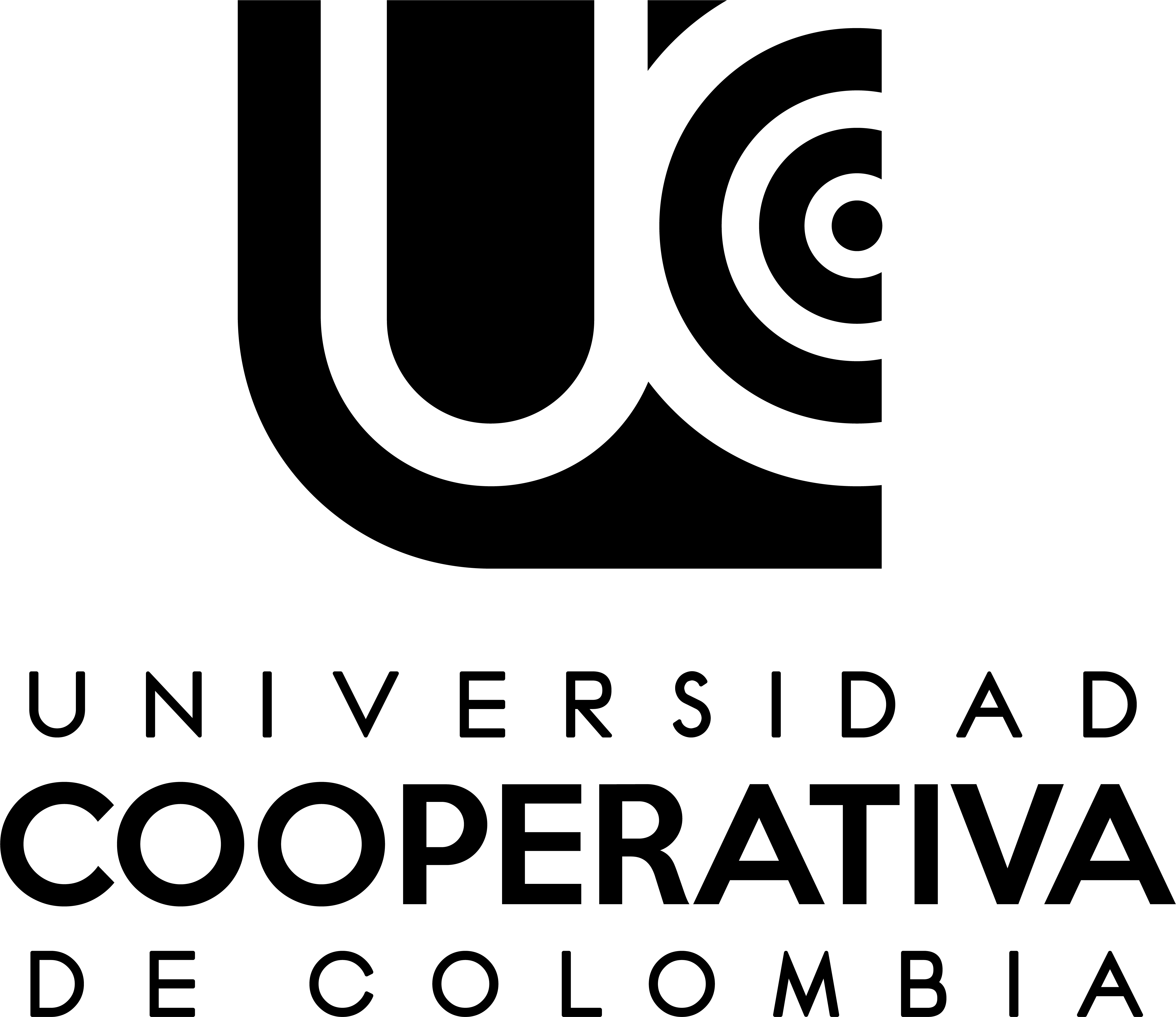Vulnerable Road Users, Prioritization of Urban Sectors with High Accident Rates : Review and Evaluation Of Methods

Universidad Pedagógica y Tecnológica de Colombia, UPTC
email: omar.rueda@uptc.edu.co

Universidad Pedagógica y Tecnológica de Colombia, UPTC
email: omar.rueda@uptc.edu.co

Universidad Pedagógica y Tecnológica de Colombia, UPTC, Colombia
email: omar.rueda@uptc.edu.co
Introduction: This article presents a review and analysis of studies that concern research made into “Road infrastructure design models to improve road safety for vulnerable users, prioritizing the high accident zones in Bogota D.C.”
Objective: To understand the interrelationship between the vulnerable road users, natural surrounding factors and buildings, based on the determination of the most representative variables for the analysis using Geographic Information Systems (GIS), applied to the prioritization of areas with high accident rates.
Methodology: It is based on identifying, through review, the known and unknown updated and important results about accident investigations with regards to vulnerable road users.
Results: The use of multivariable correlation – analysis of groupings that are treated with GIS – to identify the main factors associated with the seriousness of traffic accidents related to vulnerable road users, allows for the generation of road infrastructure designs that reduce the risk, based on areas of high frequency of occurrence.
Conclusions: The multi-criteria analysis and Geographic Information Systems (GIS), allow for the prioritization of areas with high accident rates not only through the evaluation of the quantity of accidents but also by the evaluation of their conditions, by which causal factors of greater influence are identified.
Originality: Development of infrastructure plans that reduce the risk of vulnerable road users being struck by a vehicle.
Limitations: The methodology is only applied to urban areas where there is a pre-existing history of accidents.
OMS, "Informe sobre la situación mundial de la seguridad vial 2013,” WHO, p. 12, 2014. [Online]. Available: http://www.who.int/violence_injury_prevention/road_safety_status/2013/es/.
Informe sobre la situación mundial de la seguridad vial 2015, WHO, p. 16, 2015. [Online]. Available: http://www.who.int/violence_injury_prevention/road_safety_status/2015/Summary_GSRRS2015_SPA.pdf?ua=1.
Country profiles, WHO, p. 181, 2015. [Online]. Available: http://www.who.int/violence_injury_prevention/road_safety_status/2015/Country_profiles_combined_GSRRS2015_2.pdf?ua=1.
F. Á. Cerquera Escobar, “Análisis espacial de los accidentes de tráfico en Bogotá D.C. Fundamentos de investigación,” Perspect. Geográfica, vol. 18, no. 1, p. 9, Jan. 2013. [Online]. doi: http://dx.doi.org/10.19053/01233769.2248.
Mintransporte, “Ley_0769_2002,” Diario Oficial, no. 44.932, 13 de Sep. 2002. [Online]. Available: http://www.secretariasenado.gov.co/senado/basedoc/ley_0769_2002.html.
Semana, Sección Nación, “En Bogotá aumentaron a 16 % las muertes de ciclistas por accidentes,” Semana, 2016. [Online]. Available: http://www.semana.com/nacion/articulo/bogota-aumentaron-las-muertes-de-ciclistas-por-accidentes/467147. [Accessed: 11-Mar-2018].
M. E. Pico Merchán, R. E. González Pérez, and O. P. Noreña Aristizábal, "Seguridad vial y peatonal: una aproximación teórica desde la política pública," Hacia la promoción de la salud., vol. 16, no. 2, 2011. [Online]. Available: http://www.scielo.org.co/scielo.php?script=sci_arttext&pid=S0121-75772011000200014.
J. I. Nazif, D. Rojas, R. J. S. Álvaro, and V. Espinosa, “Inst rumentos para la toma de decisiones en políticas de seguridad vial en América Latina El Índice de Seguridad de Tránsito (INSETRA) recursos naturales e infraestructura 115 División de Recursos Naturales e Infraestructura”. [Online]. Available: https://repositorio.cepal.org/bitstream/handle/11362/6311/S0600581_es.pdf?sequence=1&isAllowed=y.
F. A. Cerquera-Escobar, “Modelo patrón de evaluación de la accidentalidad vial en áreas urbanas de Bogotá (Colombia),” Carreteras, vol. 2015, no. 202, pp. 45–62, 2015.
J. Whitelegg, “A Geography of Road Traffic Accidents,” Trans. Inst. Br. Geogr., vol. 12, no. 2, p. 161, 1987. [Online]. doi: http://dx.doi.org/10.2307/622525
N. Levine, K. E. Kim, and L. H. Nitz, “Spatial analysis of Honolulu motor vehicle crashes: I. Spatial patterns,” Accid. Anal. Prev., vol. 27, no. 5, pp. 663–674, Oct. 1995. [Online]. doi: http://dx.doi.org/10.1016/0001-4575(95)00017-T
N. Levine, K. E. Kim, and L. H. Nitz, “Spatial analysis of Honolulu motor vehicle crashes: II. Zonal generators,” Accid. Anal. Prev., vol. 27, no. 5, pp. 675–685, Oct. 1995. [Online]. doi: http://dx.doi.org/10.1016/0001-4575(95)00018-U
D. Lord, S. P. Washington, and J. N. Ivan, “Poisson, Poisson-gamma and zero-inflated regression models of motor vehicle crashes: balancing statistical fit and theory,” Accid. Anal. Prev., vol. 37, no. 1, pp. 35–46, Jan. 2005. [Online]. doi: http://dx.doi.org/10.1016/j.aap.2004.02.004
J. K. Affum and M. Taylor, “Integrated gis database for road safety management,” 1995. [Online]. Available: https://trid.trb.org/View/464320
K. Austin, M. Tight, and H. Kirby, “The use of geographical information systems to enhance road safety analysis,” Transp. Plan. Technol., vol. 20, no. 3, pp. 249–266, Mar. 1997. [Online]. doi: http://dx.doi.org/10.1080/03081069708717592
K. Kim and N. Levine, “Using GIS to improve highway safety,” Comput. Environ. Urban Syst., vol. 20, no. 4–5, pp. 289–302, Jul. 1996. [Online]. doi: http://dx.doi.org/10.1016/S0198-9715(96)00022-1
John S. Miller, “What Value May Geographic Information Systems Add to the Art of Identifying ... - John S. Miller - Google Libros,” Report VTRC 99-R13, 1999.
S. S. Pulugurtha, V. K. Krishnakumar, and S. S. Nambisan, “New methods to identify and rank high pedestrian crash zones: An illustration,” Accid. Anal. Prev., vol. 39, no. 4, pp. 800–811, Jul. 2007. [Online]. doi: http://dx.doi.org/10.1016/J.AAP.2006.12.001.
F. A. Cerquera Escobar (2015) Análisis espacial de la accidentalidad vial urbana : método de investigación con SIG. Universidad Pedagógica y Tecnológica de Colombia, 2015. [Online]. Available: https://www.buscalibre.com.co/libro-analisis-espacial-de-la-accidentalidad-vial-urbana-metodo-de-investigacion-con-sig/9789586602099/p/46874964?gclid=EAIaIQobChMIqZCI3sTl2QIVVFuGCh2ShA2lEAYYASABEgKEpvD_BwE
P. Greibe, “Accident prediction models for urban roads,” Accid. Anal. Prev., vol. 35, no. 2, pp. 273–285, Mar. 2003. [Online]. doi: http://dx.doi.org/10.1016/S0001-4575(02)00005-2
L. A. B. Jaramillo and L. L. Vélez, “Priorización de zonas geográficas mediante el uso de sistemas de información geográfica: Aplicación a un municipio Colombiano,” Investig. Geográficas, no. 46, p. ág. 93-112, Dec. 2013. [Online]. doi: http://dx.doi.org/10.5354/IG.V0I46.30285
D. C. Bocarejo J, “Characterization of Fatal Road Traffic Accidents Using k-Means Clustering: Case Study of Bogotá, Colombia,” Transp. Res. Rec. no. 11-4026(Session 424), pp. 1–8, 2011. [Online]. Available: https://sur.uniandes.edu.co/index.php/resarch/publicaciones.
W. Org et al., Ciudades más seguras mediante el diseño. [Online]. Available: http://wrimexico.org/sites/default/files/Cities_Safer_By_Design_Spanish.pdf.
H. Dupree, Urban transportation : the new town solution. Gower, 1987.
S.-P. Miaou and H. Lum, “Modeling vehicle accidents and highway geometric design relationships,” Accid. Anal. Prev., vol. 25, no. 6, pp. 689–709, Dec. 1993. [Online]. doi: http://dx.doi.org/10.1016/0001-4575(93)90034-T
S.-P. Miaou, “The relationship between truck accidents and geometric design of road sections: Poisson versus negative binomial regressions,” Accid. Anal. Prev., vol. 26, no. 4, pp. 471–482, Aug. 1994. [Online]. doi: http://dx.doi.org/10.1016/0001-4575(94)90038-8
A. Tripodi, L. Persia, P. Di Mascio, M. V. Corazza, and A. Musso, “A Decision Support System for Analysis of Vulnerable Road Users Safety Issues: Results of the SAFERBRAIN Project,” Procedia - Soc. Behav. Sci., vol. 53, pp. 841–850, Oct. 2012. [Online]. doi: http://dx.doi.org/10.1016/J.SBSPRO.2012.09.933
R. Sims et al. (2011) Innovative guidelines and tools for vulnerable road users safety in India and Brazil [SaferBraIn]: D3.3 Decision Support System functionalities and specifications. [Online]. Available: https://dspace.lboro.ac.uk/dspace-jspui/handle/2134/19151
C. Martínez Gaete, “5 propuestas de intersecciones más seguras para diversos modos de movilidad | ArchDaily Colombia,” archdaily, 2016. [Online]. Available: https://www.archdaily.co/co/783659/5-propuestas-de-intersecciones-mas-seguras-para-diversos-modos-de-movilidad#
G. M. Mackay, “Pedestrian and Cyclist Road Accidents,” J. Forensic Sci. Soc., vol. 15, no. 1, pp. 7–15, Jan. 1975. [Online]. doi: http://dx.doi.org/10.1016/S0015-7368(75)71019-8
P. D. Norton, “Street Rivals: Jaywalking and the Invention of the Motor Age Street,” Technol. Cult., vol. 48, no. 2, pp. 331–359, 2007. [Online]. doi: http://dx.doi.org/10.1353/tech.2007.0085
UPCommons (2003) Factores causantes de los accidentes. [Online]. Available: https://upcommons.upc.edu/bitstream/handle/2099.1/6321/06.pdf?sequence=7.
V. . Sisiopiku and D. Akin, “Pedestrian behaviors at and perceptions towards various pedestrian facilities: an examination based on observation and survey data,” Transp. Res. Part F Traffic Psychol. Behav., vol. 6, no. 4, pp. 249–274, Dec. 2003. [Online]. doi: http://dx.doi.org/10.1016/J.TRF.2003.06.001
R. Almodfer, S. Xiong, Z. Fang, X. Kong, and S. Zheng, “Quantitative analysis of lane-based pedestrian-vehicle conflict at a non-signalized marked crosswalk,” Transp. Res. Part F Traffic Psychol. Behav., vol. 42, pp.
–478, Oct. 2016. [Online]. doi: http://dx.doi.org/10.1016/J.TRF.2015.07.004
S. A. Bennet and N. Yiannakoulias, “Motor-vehicle collisions involving child pedestrians at intersection and mid-block locations,” Accid. Anal. Prev., vol. 78, pp. 94–103, May 2015. [Online]. doi: http://dx.doi.org/10.1016/J.AAP.2015.03.001
Z. Asadi-Shekari, M. Moeinaddini, and M. Zaly Shah, “Pedestrian safety index for evaluating street facilities in urban areas,” Saf. Sci., vol. 74, pp. 1–14, Apr. 2015. [Online]. doi: http://dx.doi.org/10.1016/J.SSCI.2014.11.014
Y. Zheng, T. Chase, L. Elefteriadou, B. Schroeder, and V. P. Sisiopiku, “Modeling vehicle–pedestrian interactions outside of crosswalks,” Simul. Model. Pract. Theory, vol. 59, pp. 89–101, Dec. 2015. [Online]. doi: http://dx.doi.org/10.1016/J.SIMPAT.2015.08.005
Alcaldía Mayor de Bogotá, “Bogotá invita a sus ciudadanos a que aporten sus ideas para mejorar la movilidad de los niños - Secretaría Distrital de Movilidad - simurportal,” Sistema Integrado de Información sobre Movilidad Urbano Regional, 2016. [Online]. Available: http://www.simur.gov.co/secretaria-distrital-de-movilidad1/-/asset_publisher/7Q43GofwLlxQ/content/bogota-invita-a-sus-ciudadanos-a-que-aporten-sus-ideas-para-mejorar-la-movilidad-de-los-ninos;jsessionid=1ec61c8a0e6438d83d5238fb8f81.
Secretaria Distrital de Movilidad de Bogotá, “Guía global en el diseño de calles y comunidades más seguras,” SDM, 2014. [Online]. Available: http://www.movilidadbogota.gov.co/hiwebx_archivos/audio_y_video/3. BEN WELLE - PLANIFICADOR URBANO Y DE TRANSPORTE_EMBARQ.pdf. [Accessed: 11-Mar-2018].
R. D. Blomberg, A. Hale, and D. F. Preusser, “Experimental evaluation of alternative conspicuity-enhancement techniques for pedestrians and bicyclists,” J. Safety Res., vol. 17, no. 1, pp. 1–12, Mar. 1986. [Online]. doi: http://dx.doi.org/10.1016/0022-4375(86)90002-2
W. Haddon, P. Valien, J. R. McCarroll, and C. J. Umberger, “A controlled investigation of the characteristics of adult pedestrians fatally injured by motor vehicles in Manhattan,” J. Chronic Dis., vol. 14, no. 6, pp. 655–678, Dec. 1961. [Online]. doi: http://dx.doi.org/10.1016/0021-9681(61)90122-9
Internet Point y Insurance Reduction Progran, “Alcohol y la seguridad de tránsito,” USA Training Company, 2016. [Online]. Available: https://www.newyorkdefensivedriving.com/course_sample_spanish.html?p=11. [Accessed: 11-Mar-2018].
G. P-B., F. G-B. y F. A. Cerquera-Escobar, “Actualización del manual De Auditorías de seguridad vial de Bogotá,” Contrato 20141460. SDM-UPTC., 2015.
X. Yang, M. Huan, M. Abdel-Aty, Y. Peng, and Z. Gao, “A hazard-based duration model for analyzing crossing behavior of cyclists and electric bike riders at signalized intersections,” Accid. Anal. Prev., vol. 74, pp. 33–41, Jan. 2015. [Online]. doi: http://dx.doi.org/10.1016/J.AAP.2014.10.014
P. Chen, “Built environment factors in explaining the automobile-involved bicycle crash frequencies: A spatial statistic approach,” Saf. Sci., vol. 79, pp. 336–343, Nov. 2015. [Online]. doi: http://dx.doi.org/10.1016/J.SSCI.2015.06.016
T. Sayed, M. H. Zaki, and J. Autey, “Automated safety diagnosis of vehicle–bicycle interactions using computer vision analysis,” Saf. Sci., vol. 59, pp. 163–172, Nov. 2013. [Online]. doi: http://dx.doi.org/10.1016/J.SSCI.2013.05.009
A. M. Roshandeh, Z. Li, S. Zhang, H. S. Levinson, and X. Lu, “Vehicle and pedestrian safety impacts of signal timing optimization in a dense urban street network,” J. Traffic Transp. Eng., vol. 3, no. 1, pp. 16–27, Feb. 2016. [Online]. doi: http://dx.doi.org/10.1016/J.JTTE.2016.01.001
P. Chen, C. Wu, and S. Zhu, “Interaction between vehicles and pedestrians at uncontrolled mid-block crosswalks,” Saf. Sci., vol. 82, pp. 68–76, Feb. 2016. [Online]. doi: http://dx.doi.org/10.1016/J.SSCI.2015.09.016
J. Aguero-Valverde and P. J., “Bayesian multivariate Poisson lognormal models for crash severity modeling and site ranking,” trrjournalonline.trb.org, 2009. [Online]. Available: http://trrjournalonline.trb.org/doi/abs/10.3141/2136-10.
K. Jamroz, M. Budzyński, W. Kustra, L. Michalski, and S. Gaca, “Tools for Road Infrastructure Safety Management – Polish Experiences,” Transp. Res. Procedia, vol. 3, pp. 730–739, Jan. 2014. [Online]. doi: http://dx.doi.org/10.1016/J.TRPRO.2014.10.052.
M. G. Mohamed, N. Saunier, L. F. Miranda-Moreno, and S. V. Ukkusuri, “A clustering regression approach: A comprehensive injury severity analysis of pedestrian–vehicle crashes in New York, US and Montreal, Canada,” Saf. Sci., vol. 54, pp. 27–37, Apr. 2013. [Online]. doi: http://dx.doi.org/10.1016/J.SSCI.2012.11.001
W.R Gilks, S. Richardson, and D.J. Spiegelhalter, D.J. Markov Chain Monte Carlo in Practice. Chapman and Hall, London, UK, 1996.
Copyright (c) 2019 Ingeniaría Solidaria

This work is licensed under a Creative Commons Attribution 4.0 International License.
Cession of rights and ethical commitment
As the author of the article, I declare that is an original unpublished work exclusively created by me, that it has not been submitted for simultaneous evaluation by another publication and that there is no impediment of any kind for concession of the rights provided for in this contract.
In this sense, I am committed to await the result of the evaluation by the journal Ingeniería Solidaría before considering its submission to another medium; in case the response by that publication is positive, additionally, I am committed to respond for any action involving claims, plagiarism or any other kind of claim that could be made by third parties.
At the same time, as the author or co-author, I declare that I am completely in agreement with the conditions presented in this work and that I cede all patrimonial rights, in other words, regarding reproduction, public communication, distribution, dissemination, transformation, making it available and all forms of exploitation of the work using any medium or procedure, during the term of the legal protection of the work and in every country in the world, to the Universidad Cooperativa de Colombia Press.










